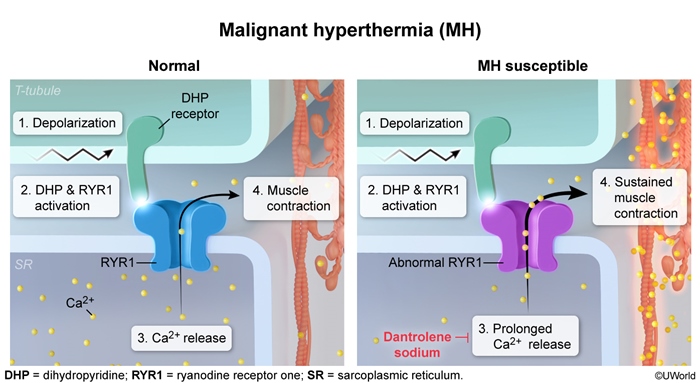Malignant Hyperthermia
Article Sections
Introduction
Malignant hyperthermia is a rare but potentially life-threatening disorder characterized by a hypermetabolic response to volatile anesthetics and depolarizing muscle relaxants. Most cases arise shortly after induction or during maintenance of anesthesia in susceptible individuals. A genetic defect in skeletal muscle receptors causes sustained muscle contraction, which can lead to hypercarbia, metabolic acidosis, rhabdomyolysis, and hyperthermia. Malignant hyperthermia is a clinical diagnosis that requires immediate treatment with dantrolene (a muscle relaxant), along with supportive measures (eg, cooling), to prevent death.
Risk factors
- Genetic predisposition: Autosomal dominant genetic mutation causes abnormal ryanodine receptors (RYR1) in the skeletal muscle (Figure 1)
- Anesthetic exposure: This is the main trigger for malignant hyperthermia in susceptible patients. It involves volatile anesthetics (eg, halothane, isoflurane) and depolarizing muscle relaxants
Continue Learning with UWorld
Get the full Malignant Hyperthermia article plus rich visuals, real-world cases, and in-depth insights from medical experts, all available through the UWorld Medical Library.
Figures
